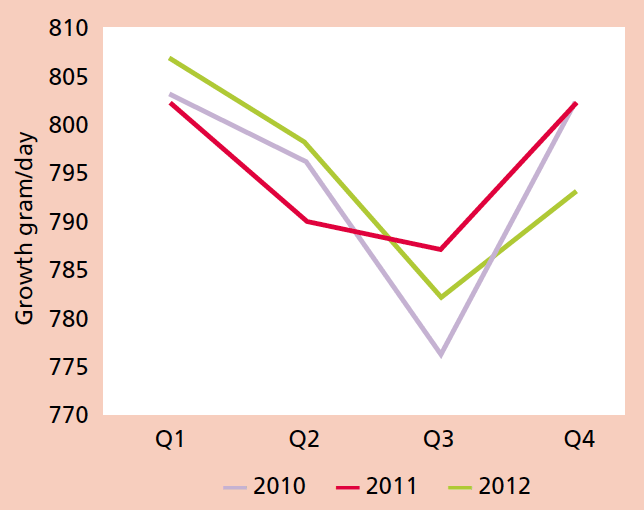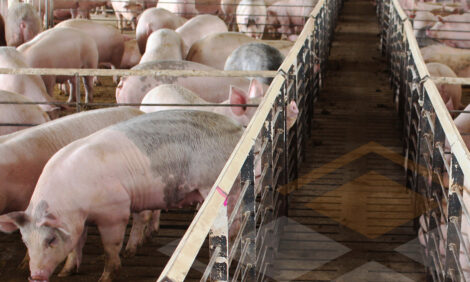



Overcoming Heat Stress in Pigs Through Nutrition
Heat stress affects the pig industry in tropical climates and temperate regions as well. Economic losses due to heat stress in the US swine industry alone are estimated at US$316 million annually, write André van Lankveld and Simone Schaumberger.These losses include non-productive days for sows and economic losses in growing-finishing pigs. Even in mild climate conditions such as the Netherlands pigs have problems in the summer with performance losses due heat stress (Figure 1).

Figure 1. Seasonality and the impacts of heat stress on swine in mild climates.
Source: Agrovision 2013
Pigs more heat stressed
Pigs are much more sensitive to hot weather than other livestock animals—largely due to the fact that pigs hardly sweat and their lungs are relatively small compared to body size. When pigs are exposed to heat stress, their respiration rate increases, pulse rate falls, they start heavily panting and they stop eating because this contributes to further heat production.
The fact that heavier pigs are more sensitive to heat stress can be clearly seen in growth performance parameters. Investigation of different weight classes (75, 80 and 28 kg body weight) showed a direct negative correlation on average daily gain (ADG) with increasing room temperature.
While 75 kg pigs start to decrease their ADG at around 23°C, pigs with 25 kg can compensate up to 27°C (Langridge, Western Australia, 2014). A commonly accepted temperature range for sows in the farrowing house typically spans between 21°C and 25°C —though this range is too high.
Nursery sows begin to show signs of heat stress starting at 22°C (Table 1). The feed intake drops almost 0.5 kg/day as temperature increases to 25°C.
To keep reading this article, please visit the Biomin website, here.
October 2015






